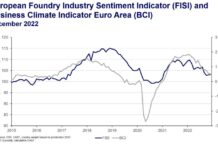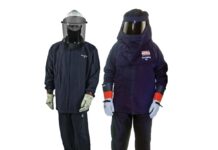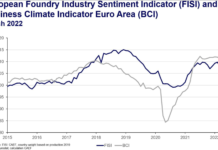The Niwe Project, presented at Bilbao exhibition centre by the Foundry Association of the Basque Country and Navarre, aims at realizing a new production process able to diminish by over 25%the energy consumption of the foundries involved, at the same time drastically decreasing CO2 and GHG emissions.
The first project phase provides for the project management and the coordination among the various partners: of an aluminium die-casting foundry (Fonderie 2a Spa, Italian), of a steel foundry (Bilbobul Ood, Bulgaria) and finally of a cast iron foundry (the Spanish Furesa S. Coop).
The second phase provides instead for the definition of technical specifications, of the environmental ones and of the various safety aspects, with the very precise targets of the identification of the characteristics shared by the various work groups, like for instance the characteristics of refractory materials, heating systems (for instance Icpt), new heat and metallurgical treatments of the liquid metal, smart control systems, Lca and Lcc studies (that’s to say Life-cycle assessment and Life-cycle costing, referring to the regulations UNI-EN ISO 14040:2006, UNI-EN ISO 14044:2006 and ISO-15686-5:2008); the simulation and the concepts of the new production processes; the identification of inputs and outputs, in terms of quality, quantity and times; the definition of the technical safety and environmental features of the new appliances to be developed in compliance with the respect of the environmental impact, of costs and of the energy saving.
In the third phase, they will then specifically design the new systems, processes and materials to be used for the construction of demonstrators. Just to make an example, they will have to develop some refractory materials with a heat conductivity inferior to 1W/mK and characterized by a thermal expansion coefficient lower than 10-6/°C, with the target of reducing heat losses through an innovative thermal insulation system.
They will choose the most suitable liquid metal heating system for the three foundries, in order to optimize the energy performances. They will proceed then with the development of an innovative Icpt wireless system for the electric energy transmission, that is to say without any physical connection between the connection point and the one, instead, for the final use one. Besides, it will be also necessary to design a new shielding system for the inductive system, with the task of preventing workers’ exposure to electromagnetic radiations. In this phase of the whole project, they will develop innovative metallurgical treatments of the metal at the liquid state for each demonstrator, as well as the optimization of heat processes.
Concerning refractory materials, they will study the following elements: grain sizes, raw material to produce them, boundary systems, density, sintering process and permeability, and all other physical-chemical properties requested. The new heating systems will be constituted by state-of-the-art electrical resistances and by inductive systems, or as an alternative they will be also used simultaneously inside demo machines. In this way, it will be also possible to evaluate new ceramic materials. Besides, they will proceed with the simulation, carried out with the aid of dedicated software, of the heat transfer in conventional resistance furnaces, inductive or gas ones, and of the new systems.
Project engineering and validation
The fourth phase exactly represents the engineering and the validation through specific lab tests on the three implemented prototypes, the comparison of all parameters with those analysed by the simulation software, with the aim of optimizing the original project for the realization of final demonstrators. The latter will be much more flexible than standard systems, granting a more efficient production together with a notable energy saving, because the productive process in its totality will be optimized in this way.
The fifth phase provides therefore for the detailed engineering of prototypes, the preparation of the necessary technical documentation for the demonstrator construction, through the integration of the results of the laboratory test phase, of designs, of technical reports, of assembly diaphragms, of furnaces, of refractory materials, of the heating and electrical power transfer systems, of electro-mechanical actuators, of cooling systems, of hydraulic systems etcetera. At the end of this fifth phase, they will proceed with the drawing up of the technical specifications of the equipment.
The sixth phase provides for the real manufacturing and the start-up of equipment, the assembly and the installation at the three foundries’, the connection of power, of water and air and of all necessary elements; the pre-heating and all the tests of the control systems of temperature, handling and transfer of heat. The process will finally end with the training activities of the personnel committed to the experimentation. All this will be executed in the three mentioned foundries of aluminium, steel and cast iron.
In the seventh and penultimate project stage, they will proceed instead with the monitoring of the energy consumption, of emissions and of the final product quality. Besides, the latter, in particular, will necessarily be by far superior in comparison with what attained with conventional systems. The primary target, in this case, consists in verifying the final performances of the implemented demonstrators.
The eighth and last phase provides for the so called dissemination, that is to say a real work of awareness raise and diffusion of information through conventions, dedicated publications and then through other information and communication systems, of the results achieved in the research project, also with the goal of developing a structure granting the continuity of the Niwe project after the end of the project itself, too.
Conclusions
The project is aimed at reducing the energy consumption by about 1,360 kWh/t in the aluminium sector (against 2,000 kWh/t calculated according to the data concerning 2004); by about 500 kWh/t in the cast iron ambit (against 4,500 kWh/t accounted for in 2004) and by about 750 kWh/t (against 4,500 kWh/t, still according to the estimates processed nine years ago) in the steel sector, thus achieving a CO2 emission equal to 0.4 t CO2/t of product.
Nine partners for a pan-european initiative
They are nine and they come from four different European nations the companies and the associations operating in various sectors of the international foundry industry that have taken part in the Niwe project: Tecnalia, Fundacion Tecnalia research & innovation (Spain), operating as research centre; Abp Induction systems Gmbh (Germany), manufacturer of induction furnaces; Bilbobul Ood (Bulgaria), steel foundry; Gis, Giesserei Instadsetzung service 2003 Sl, in its turn Spanish, furnace producer. From Italy, and precisely from Santena, in the Turin outskirts, came 2A Spa Foundry Division, specialized in the aluminium die-casting foundry. These are followed by Circe, Fundacion Circe, Centro de investigacion de recursos y consumos energeticos (Spain), research centre; Sematec, servicios medioambientales y tecnicos Sa (Spain), supplier of safety systems; the cast iron foundry Furesa S. Coop (Spain); finally the research centre Afv, Asociacion de fundidores del Pais Vasco y Navarra (Spain). Information about the complete initiative are also available at the address www.niweproject.eu.
Project target
The project targets are the reduction of the energy consumption by about 1,360 kWh/t in the aluminium sector (against 2,000 kWh/t calculated according to the data concerning 2004); by about 500 kWh/t in the cast iron sector (against 4,500 kWh/t accounted for in 2004) and by about 750 kWh/t (against 4,500 kWh/t, still according to the estimates processed nine years ago) in the steel field, thus obtaining a CO2 emission equal to 0.4 t CO2/t of product. Other targets are the improvement of the quality of the melt metal and of final products; flexibility of the new equipment for the foundry industry.
For further information NiweProject



